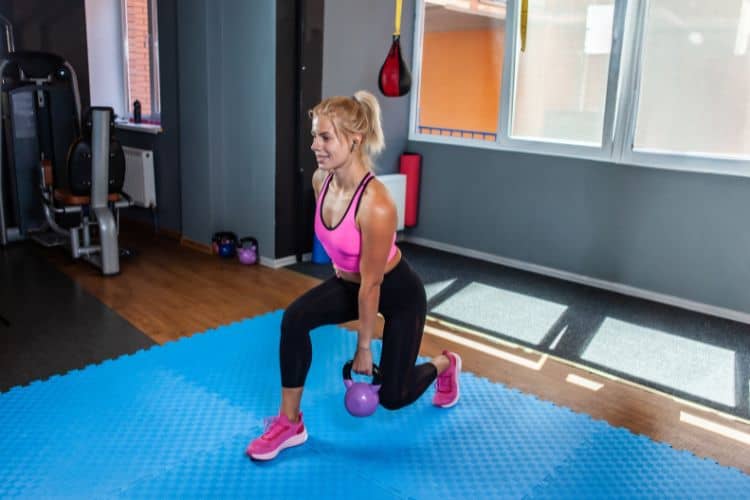Sign up for workout ideas, training advice, reviews of the latest gear and more.






When it comes to creating an effective workout routine, understanding which muscle groups to train together is crucial, especially for women who often have different fitness goals and physiological needs compared to men. This blog post will delve into the best muscle groups to train together for women, aiming to maximize efficiency and results in their fitness journey.
Before diving into specific pairings, it’s essential to understand the primary muscle groups: the chest, back, legs (which include quadriceps, hamstrings, and calves), shoulders, arms (biceps and triceps), and core. Training complementary muscle groups together can lead to more efficient workouts and better muscle recovery.
One effective combination is training the chest and triceps together. Many chest exercises, like push-ups and bench presses, incidentally engage the triceps, making it logical to train these two groups in the same session. This approach not only saves time but also ensures these muscles are worked in a complementary manner.
Similarly, training the back and biceps together is efficient because many back exercises, such as rows and pull-downs, also activate the biceps. This combination allows for a focused workout that targets both areas effectively, encouraging balanced muscle development.
Leg day is crucial and can be quite demanding. Training all major leg muscle groups – quads, hamstrings, and calves – in a single session ensures a comprehensive lower body workout. This approach also aligns with the functional movement patterns we use in daily life.
Pairing shoulder workouts with arm exercises (biceps and triceps) can be another efficient combination. Since the shoulders are involved in many arm movements, this pairing can help in developing upper body strength harmoniously.
While the core can be trained with any muscle group, pairing it with cardio sessions can be particularly beneficial. The core muscles are essential for stability and balance, which are key components in many cardio activities. This pairing can also contribute to improved endurance and overall fitness.
Balancing workout intensity and recovery time is essential. It’s important to avoid overtraining, which can lead to injury and hinder progress. Incorporating rest days or focusing on different muscle groups in subsequent sessions allows the body time to recover.
Every woman’s body is different, and what works for one may not work for another. Personalizing workouts based on individual goals, fitness levels, and preferences is crucial. Whether the goal is muscle building, toning, or overall fitness, tailoring workouts to individual needs will yield the best results.
While consistency in training is important, incorporating variety is key to avoid plateaus. Changing up exercises, intensities, and even muscle group pairings can keep workouts challenging and engaging.
No workout plan is complete without considering nutrition and hydration. A balanced diet rich in proteins, carbohydrates, healthy fats, vitamins, and minerals supports muscle growth and recovery. Hydration is equally important, as water plays a crucial role in muscle function and overall health.
For those new to fitness or looking to optimize their routine, consulting fitness professionals can provide valuable guidance. Personal trainers or physiotherapists can offer personalized advice based on individual health conditions and fitness goals.
Understanding the best muscle groups to train together is just one part of creating an effective workout routine for women. A holistic approach that includes balanced workouts, proper nutrition, adequate rest, and personalized adjustments will lead to sustainable fitness progress and overall well-being. By focusing on these elements, women can build a fitness routine that is not only effective but also enjoyable and aligned with their unique fitness goals.
For those short on time or seeking variety, full-body workouts are an excellent option. These sessions, typically involving compound movements like squats, deadlifts, and overhead presses, engage multiple muscle groups simultaneously. This approach not only saves time but also boosts metabolic rate and enhances cardiovascular health.
Superset training, where two exercises targeting different muscle groups are performed back-to-back with minimal rest, is another efficient strategy. For instance, pairing a lower body exercise like lunges with an upper body exercise like push-ups can maximize workout intensity and time efficiency.
To continually make gains, it’s important to incorporate the principle of progressive overload. This means gradually increasing the intensity of workouts, either by adding more weight, increasing reps, or reducing rest periods. This continual challenge is crucial for muscle growth and strength gains.
Women’s bodies are significantly influenced by hormonal fluctuations throughout their life. Understanding how hormones like estrogen and progesterone affect muscle strength and recovery can help in tailoring workouts more effectively. For instance, some women may find they have more strength and endurance during certain phases of their menstrual cycle.
As women age, their bodies undergo changes that can affect their fitness routine. Muscle mass naturally decreases with age, making strength training even more important. Tailoring workouts to include more resistance training can help counteract this loss and maintain muscle function and bone density.
The mind-muscle connection – focusing on the muscle being worked during exercise – can enhance the effectiveness of workouts. This practice not only improves form and reduces the risk of injury but also maximizes muscle engagement and growth.
Adequate recovery is as important as the workout itself. This includes getting enough sleep, practicing stress-reduction techniques, and engaging in active recovery like yoga or light cardio. Self-care practices help in muscle recovery and overall well-being.
Incorporating flexibility and mobility exercises into a fitness regimen is crucial. These exercises improve range of motion, reduce the risk of injury, and enhance the effectiveness of strength training exercises.
Understanding the role of nutrition in muscle growth and recovery is vital. Consuming enough protein, healthy fats, and carbohydrates is essential. Additionally, supplements like BCAAs (Branched-Chain Amino Acids), protein powders, and vitamins can support muscle recovery and growth, although they should be taken according to individual needs and after consulting a healthcare professional.
Setting realistic goals and tracking progress helps in maintaining motivation and focus. Whether it’s lifting heavier weights, improving endurance, or achieving a specific physique, having clear goals and periodically assessing progress is key to long-term success.
Incorporating these elements into a workout routine can greatly enhance a woman’s fitness journey. Understanding which muscle groups to train together is just the beginning. A comprehensive approach that includes varied training methods, attention to hormonal and age-related changes, focus on nutrition, and prioritizing recovery and self-care, will lead to a balanced and sustainable path to fitness and health. This holistic approach ensures not just physical strength, but also overall wellness and a deeper connection with one’s body.
Stay up to date on the latest women’s health, fitness and lifestyle trends and tips.